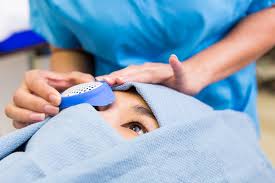
New Delhi. If your vision is gradually getting blurry, then it can be a sign of cataract. The job of the lens of our eyes is to provide clear vision, but in case of cataract, the natural lens of the eyes becomes blurred. In India, cataract (Cataract Care) is a major reason for loss of vision.
A survey conducted by WHO and National Program for Control of Blindness (NPCB) shows that more than 2.2 crore people in the country are blind, out of which 80.1% cases are due to cataract. About 3.8 million people lose their eyesight due to cataract every year, but there is no need to be afraid of it because cataract is treatable in today's era.
How are cataracts treated?
The only treatment for cataract is surgery. In surgery, the doctor removes the opaque lens and places a new intraocular lens in the patient's eye. Apart from this, Ayurveda can be used to prevent cataract. To know about Ayurvedic remedies for cataract, we spoke to Dr. Mandeep Singh Basu, who is the director of Dr. Basu Eye Hospital.
What is cataract, after all?
Cataract is a condition in which the natural lens of the eye starts to become blurred. Usually this problem starts with increasing age, but sometimes it also occurs due to injury to the eye, surgery, family history, etc. If cataract is not treated in time, the blurriness increases, due to which the rays of light are unable to reach the lens and the eyesight becomes weak.
What are the causes of cataract?
This is a common eye problem that starts with aging. However, apart from aging, there can be many other reasons for this such as-
Ayurvedic Tips for Cataract
The primary aim of Ayurvedic cataract treatment is to restore the disrupted body energy, normalize blood flow and increase the elasticity of the eye nerves and tissues. Dr. Basu recommends certain remedies:
1. Avoid extreme heat and extreme cold
Prolonged exposure to heat can cause dryness and irritation in the eyes, while extreme cold can cause blood vessels to constrict, reducing blood flow to the eyes. To protect your eyes, wear sunglasses, drink plenty of water, and eat foods rich in vitamin A.
2. Stay away from smoking
Smoking can make cataracts even more severe. The toxic chemicals in tobacco smoke can damage the proteins in the eye lens, causing blurred vision.
3. Use of drugs
Long-term use of steroids also increases the risk of cataracts. Steroids can cause changes in the lens structure of the eye, promoting the development of cataracts. Ayurvedic practitioners recommend not to use such medicines without consulting a doctor.
4. Regular checkups are necessary
Regular eye checkups are very important for early detection and management of cataracts . This helps in detecting any eye-related problem in time. So that it can be cured by starting treatment on time.
5. Use of Triphala
Triphala, a traditional Ayurvedic formulation made from three fruits (amla, haritaki and bibhitaki), is known for its numerous benefits. Using Triphala water to wash the eyes can help maintain eye health. It is believed to keep eye infections and other problems at bay and reduce the risk of cataracts.
6. Tarpana and Ashyotan Karma
Tarpana and Ashchyotana Karma are Ayurvedic treatments that specifically work to keep the eyes healthy. Tarpana involves applying medicated ghee around the eyes to provide nourishment and improve vision. Ashchyotana Karma involves the use of herbal eye drops to cleanse the eyes and improve vision. It is recommended to follow these treatments to maintain optimal eye health.
Frequently asked questions
What happens if cataract is left untreated?
If cataract is not treated, then gradually the blurriness of the eyes increases and the vision starts to diminish. Apart from this, there is difficulty in seeing in light, colors also appear faded, it becomes difficult to see at night. In severe cases, cataract can cause blindness.
What are the 3 early signs of cataracts?
At what age do cataracts start?
How many days should one rest after cataract surgery?
Read More: Lung Cancer Symptoms: Children do not smoke, then why do they get lung cancer, what are its causes?
--Advertisement--

 Priya
Priya Share
Share



